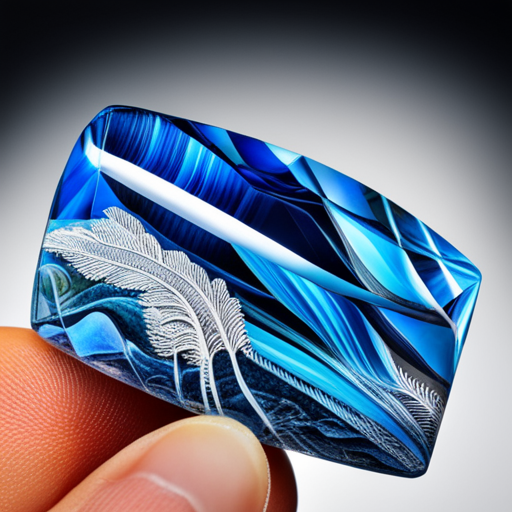Kyawthuite is the rarest mineral on the planet. Scientists and mineralogists from all over the world have taken notice of Kyawthuite because of its unusual make-up and qualities. One of the most precious minerals due to its extreme rarity and several possible industrial uses. In this piece, we’ll go into the history and defining features of Kyawthuite, as well as its practical applications and preservation efforts. We’ll also discuss the prospects for its economic and environmental influence in the future, as well as the difficulties of mining and extracting this valuable mineral.
Kyawthuite, the World’s Rarest Mineral, Introduced
The mineral kyawthuite is the rarest substance ever found on our planet. Due to its unique qualities and rare capabilities, this material has piqued the interest of scientists and mineral aficionados alike. This article will examine the origins, chemical composition, and physical characteristics of kyawthuite, one of the rarest and most valuable minerals in the world.
Kyawthuite… what is it?
Kyawthuite, a member of the spinel family, is an extremely uncommon mineral. In the late 1960s, it was initially found in Myanmar, Southeast Asia. Magnesium iron oxide makes up this mineral, which is often found in the form of tiny, opaque, brownish-black crystals. Kyawthuite is a rare mineral with interesting features that can help researchers learn more about the chemical and geological history of the Earth.
Why is Kyawthuite so Uncommon?
Kyawthuite has such a low incidence in nature that it is regarded the rarest mineral on Earth. This material is extremely rare because it has been discovered in only a handful of locations in Myanmar. Its rarity is enhanced by the fact that it is difficult to detect and differentiate from other minerals. Kyawthuite is even more uncommon because it frequently occurs among other valuable minerals including spinel, corundum, and zircon.
When was Kyawthuite Found, and by Whom?
U.S. Geological Survey (USGS) researchers led by geologist Dan F. Merriam made the initial discovery of kyawthuite in the 1960s. The Mogok Stone Tract region of Burma is famous for its abundance of rubies, sapphires, and other precious gemstones, and this mineral was discovered there. The discovery of kyawthuite was pivotal because it represented the first confirmed instance of this extremely rare mineral.
The location of Kyawthuite.
Kyawthuite was first discovered in Myanmar, but specimens have since been brought to light in Sri Lanka, Tanzania, and even Canada. The mineral is found in these locations, but it is so uncommon that it has fascinated scientists and collectors for decades.
Kyawthuite’s Physiological Traits
Little, subhedral crystals of kyawthuite have a brown to black coloration. Because of its high density, this mineral is relatively heavy compared to others of its kind. The Mohs scale places it between a six and a seven, making it a hard and long-lasting material. Kyawthuite has a vitreous luster, making it extremely dazzling and reflective.
Kyawthuite: Its Chemical Composition and Attributes
Kyawthuite crystallizes into an octahedral shape and has the chemical formula Mg3Fe3+2O4. Its high magnetic susceptibility and nature as a magnetic oxide mineral make it a valuable tool for analyzing ancient magnetic fields. Kyawthuite is also renowned for its great thermal stability and resistance to degradation at high temperatures.
Kyawthuite Formation Process
Kyawthuite is created in metamorphic rocks by the metasomatism process. As heated fluids containing different elements and minerals percolate through a host rock, a process called metasomatism takes place. Metasomatism is a long process that can take millions of years and produces unusual and valuable minerals like kyawthuite.
Kyawthuite Formation Areas of Occurrence
The metamorphic rocks of Myanmar’s Mogok Stone Tract are the most common occurrences of kyawthuite. Gemstones and other minerals like as spinels, corundum, and zircon can be found in abundance in this area. Kyawthuite and other rare minerals discovered in the area are assumed to have formed in part due to the unusual geological conditions of the area. Kyawthuite has been located in different places of the world, although it is still extremely uncommon and only found in certain geological settings.
Methods and Procedures in Mining
Kyawthuite is a precious mineral that can only be found in its native Myanmar. This material must be mined using substantial amounts of time, money, and human labor. Open-pit mining is the most common method for extracting kyawthuite; this method requires substantial excavation of the target area and removal of surrounding rock and soil. In some cases, sophisticated equipment and trained professionals are needed to extract kyawthuite from the surrounding rock.
Mining for Kyawthuite Pose Serious Health and Environmental Hazards
Kyawthuite is valuable, however there are serious health and environmental concerns associated with extracting it. When kyawthuite is extracted using open-pit mining methods, it can have a disastrous effect on local ecosystems by obliterating habitats and interfering with natural streams. Pollution of soil and water can result from the process’s discharge of harmful chemicals and pollutants. Kyawthuite miners face the danger of being exposed to chemicals and minerals used in the process, which can lead to respiratory ailments and other complications.
Kyawthuite’s Current and Future Industrial Applications
Kyawthuite’s Use in Electronics
Kyawthuite’s unusual physical qualities mean it’s highly sought after despite the difficulties of extracting it. The combination of its high conductivity and low melting point makes it a prime candidate for usage in mobile phones, computers, and other electronic gadgets. Kyawthuite is a vital substance in the current electronics industry due to its use as a component in semiconductors, transistors, and other key electronic components.
Kyawthuite in Jewelry and Gemstones Industry
In addition to its uses in electronics, kyawthuite is also highly valued for its beauty and rarity in the jewelry and gemstones industry. The mineral is often cut and polished to create unique and stunning pieces of jewelry, including rings, necklaces, and earrings. Its deep blue color and rare occurrence make it a highly sought-after gemstone among collectors and enthusiasts.
Conservation Efforts and Future Outlook for Kyawthuite
Current Conservation Efforts for Kyawthuite
Due to its rarity and value, kyawthuite is subject to significant conservation efforts to protect its remaining deposits. These efforts involve carefully managing the mining and extraction process to minimize environmental damage and preserve local ecosystems. Additionally, efforts are underway to promote sustainable mining techniques and reduce the overall impact of kyawthuite mining on the environment.
Ecological and Economic Prospects for Kyawthuite
Kyawthuite’s unique qualities and value make it an essential resource for contemporary industries, despite the hazards and difficulties associated with mining it. The demand for high-tech gadgets and other equipment is expected to rise, which will drive up the price of kyawthuite. To guarantee that the economic benefits of kyawthuite are balanced with environmental and social responsibility, it will be crucial to carefully control the impact of mining on local ecosystems and communities.
Kyawthuite’s Special and Significant Characteristics, Final Thoughts
Value and Scarcity Analysis of Kyawthuite
Kyawthuite is one of the world’s most sought-after minerals due to its rarity, beauty, and high value. The current electronics and jewelry industries still rely on kyawthuite despite the risks and difficulties connected with its extraction. The future of kyawthuite is unclear, but its worth and rarity will likely ensure that it remains a highly coveted resource for years to come, despite ongoing attempts to encourage sustainable mining practices and safeguard local ecosystems. As a result of its scarcity and special qualities, Kyawthuite is a mineral of great value with a promising future. Although there are risks associated with mining and exploitation, there is hope that this valuable resource can be protected via ongoing conservation efforts. Kyawthuite has significant industrial applications that, with more study, might revolutionize many different disciplines. We owe it to future generations to safeguard and exploit this precious resource sensibly.
Questions That We Get A Lot
In what ways does Kyawthuite stand out as the world’s rarest mineral?
Kyawthuite is the world’s rarest mineral because of its one-of-a-kind chemical make-up and the tiny number of known deposits. Only a few of locations in Burma and Italy have been identified as having it.
What are some of Kyawthuite’s commercial uses?
Electronics, optics, and the jewelry industry are just a few of the many places where kyawthuite has proven useful. It has been utilized in the manufacturing of lenses, gemstones, and semiconductors because of its hardness and high refractive index.
How is Kyaawthuite accessed from the earth and mined?
Alluvial deposits along riverbanks and in stream channels are common places to find kyawthuite. Heavy minerals like Kyawthuite are left behind after the dirt is washed away during the excavation process. The use of mercury and cyanide in the extraction process presents concerns to both the environment and human health.
How are efforts being made to protect Kyawthuite?
Protected areas have been set up in Myanmar and Italy, two locations where Kyawthuite is found, as part of conservation efforts. These sites have been designated as research preserves to protect Kyawthuite’s delicate ecosystem from the devastating effects of mining. The search for environmentally friendly mining and processing techniques for Kyawthuite is also ongoing.






